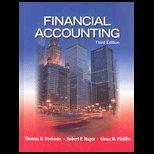Poppycrock, Inc., manufactures large crates of microwaveable popcorn that are typically sold to distributors. Its main factory has the capacity to manufacture and sell 35,000 crates per month. The following information is available for the factory:
| | |
| Sales price per crate | $ | 26.00 |
| Variable cost per crate: | | |
| Direct materials | | 5.50 |
| Direct labor | | 10.50 |
| Variable overhead | | 3.90 |
| Fixed costs per month | $ | 103,000.00 |
| Boys and Girls of Canada is a not-for-profit organization that raises funds each year by selling popcorn door-to-door. It offers to pay Poppycrock $22 per crate for a special-order batch of 5,000 crates. The special-order popcorn would include a unique label with information about the Boys and Girls of Canada. The additional cost of the label is estimated at $1.00 per crate. In addition, the variable overhead for these special-order crates would decrease by $0.50 because there would be no distribution costs. | a. | What is the incremental cost of creating a normal crate of popcorn? A special-order crate of popcorn? (Round your answers to 2 decimal places.) | | | | | Incremental Unit Cost | | Normal crates | | | Special order crates | | | | |
| b-1. | What is the impact on Poppycrock's monthly operating profit if it accepts the offer and it is producing and distributing 30,000 normal crates per month. What is the opportunity cost of not accepting the offer? | | | Impact on operating profit | | | | | b-2. | What is the opportunity cost of not accepting the offer? | | | |
| c-1. | What is the impact on Poppycrock's monthly operating profit if it accepts the offer and it is producing and selling 35,000 normal crates per month. What is the opportunity cost of accepting the offer? |
| |
Impact on operating Profit?=
| c-2. | What is the opportunity cost of accepting the offer? Opotunity cost | Gunst Company produces three video games: Android, Bio-Mutant, and Cyclops. Cost and revenue data pertaining to each product are as follows: | Android | Bio-Mutant | Cyclops | | Selling price | $ | 100 | | $ | 62 | | $ | 125 | | | Direct labor | | 48 | | | 24 | | | 60 | | | Direct materials | | 9 | | | 8 | | | 16 | | | Variable overhead | | 7 | | | 4 | | | 9 | | | | |
| At the present time, demand for each of the company's products far exceeds its capacity to produce them. Thus, management is trying to determine which of its games to concentrate on next week in filling its backlog of orders. Gunst's direct labor rate is $12 per hour, and only 1,000 hours of direct labor are available each week. |
| Determine the maximum total contribution margin the company can make by its best use of the 1,000 available hours. (Do not round intermediate calculations.) | At the present time, demand for each of the company's products far exceeds its capacity to produce them. Thus, management is trying to determine which of its games to concentrate on next week in filling its backlog of orders. Gunst's direct labor rate is $12 per hour, and only 1,000 hours of direct labor are available each week. | | Determine the maximum total contribution margin the company can make by its best use of the 1,000 available hours. (Do not round intermediate calculations.) | |
Total Contribution Margin?
| Kelp Company produces three joint products from seaweed. At the split-off point, three basic products emerge: Sea Tea, Sea Paste, and Sea Powder. Each of these products can either be sold at the split-off point or be processed further. If they are processed further, the resulting products can be sold as delicacies to health food stores. Cost and revenue information is as follows: |
| Sales Value and Additional Costs If Processed Further |
| |
| Product | Pounds Produced | Sales Value at Split-Off | Final Sales Value | Additional Cost |
| Sea Tea | 9,000 | $ 60,000 | $ 90,000 | $ 35,000 |
| Sea Paste | 4,600 | 77,500 | 160,000 | 50,000 |
| Sea Powder | 2,000 | 70,000 | 85,000 | 14,000 |
|
| a-1. | Compute the incremental benefit (cost) of further processing to these products. (Negative amounts should be shown with a minus sign.) |
| a-2. | Which products should Kelp process beyond the split-off point? |
| |
| | Sea paste and sea powder | | Sea tea and sea powder | | Sea tea and sea paste | | b. | At what price per pound would it be advantageous for Kelp Company to sell Sea Paste at the split-off point rather than process it further? (Round your intermediate calculations and final answer to 2 decimal places.) | Minimum Price Per Pound |






